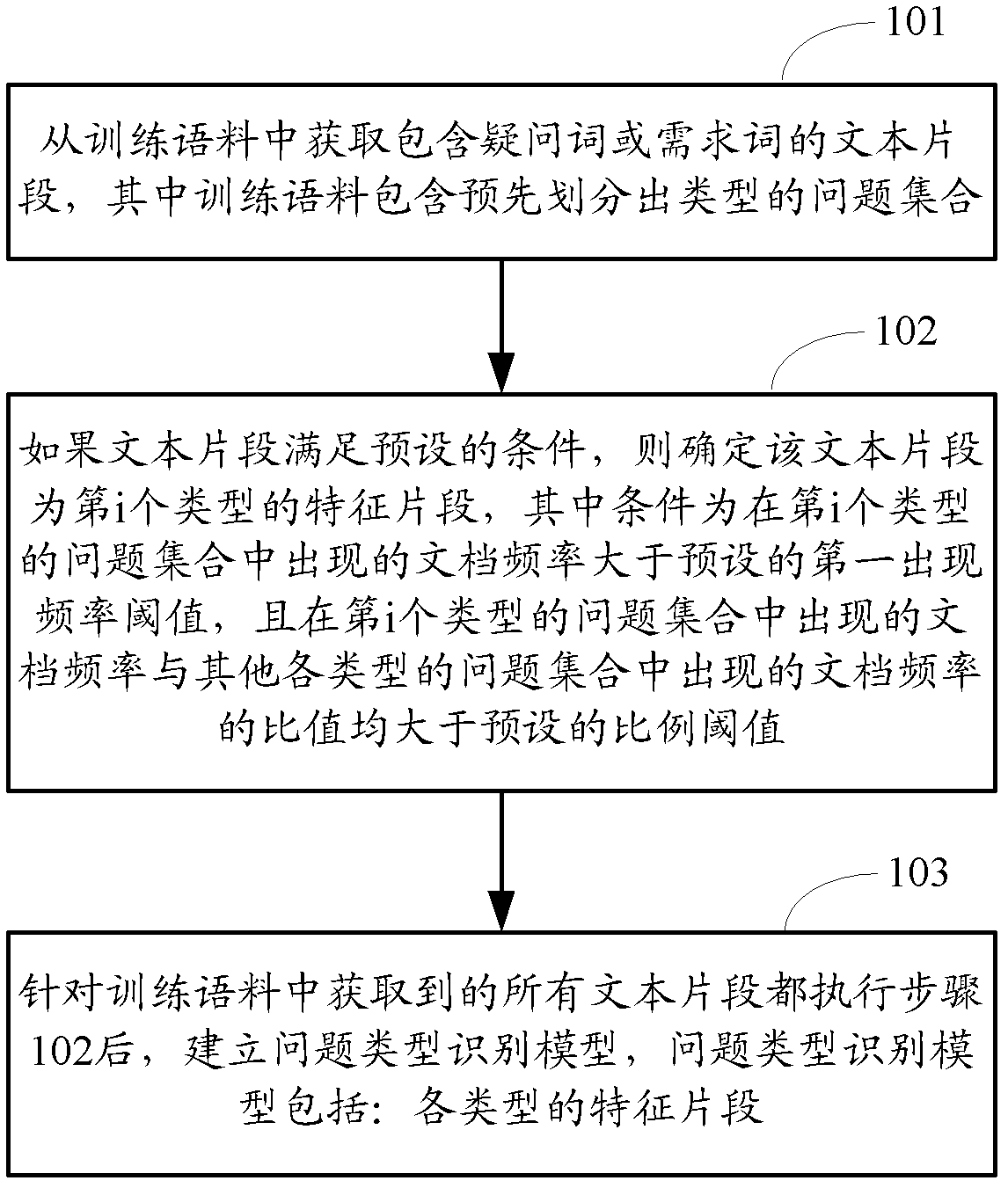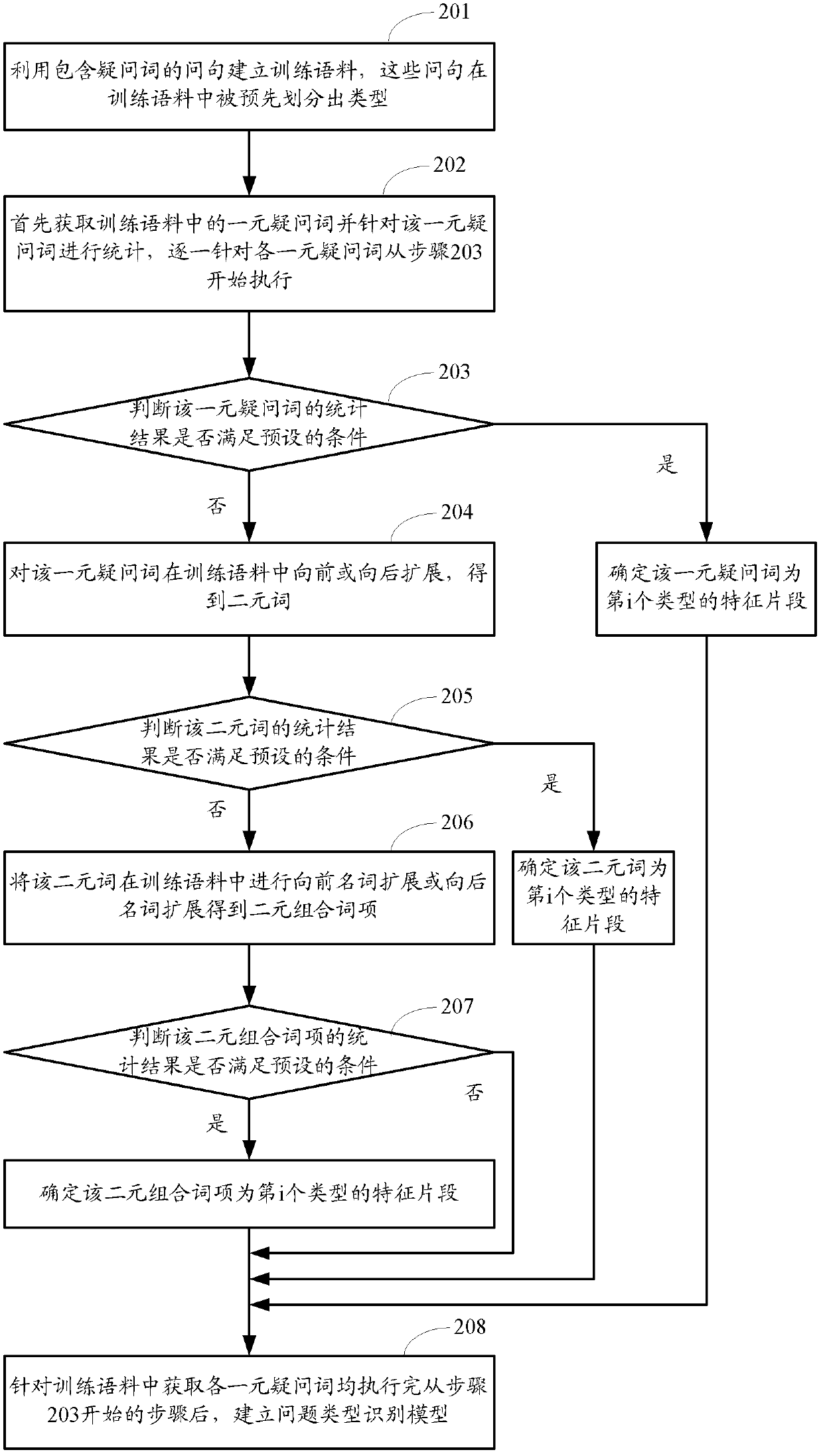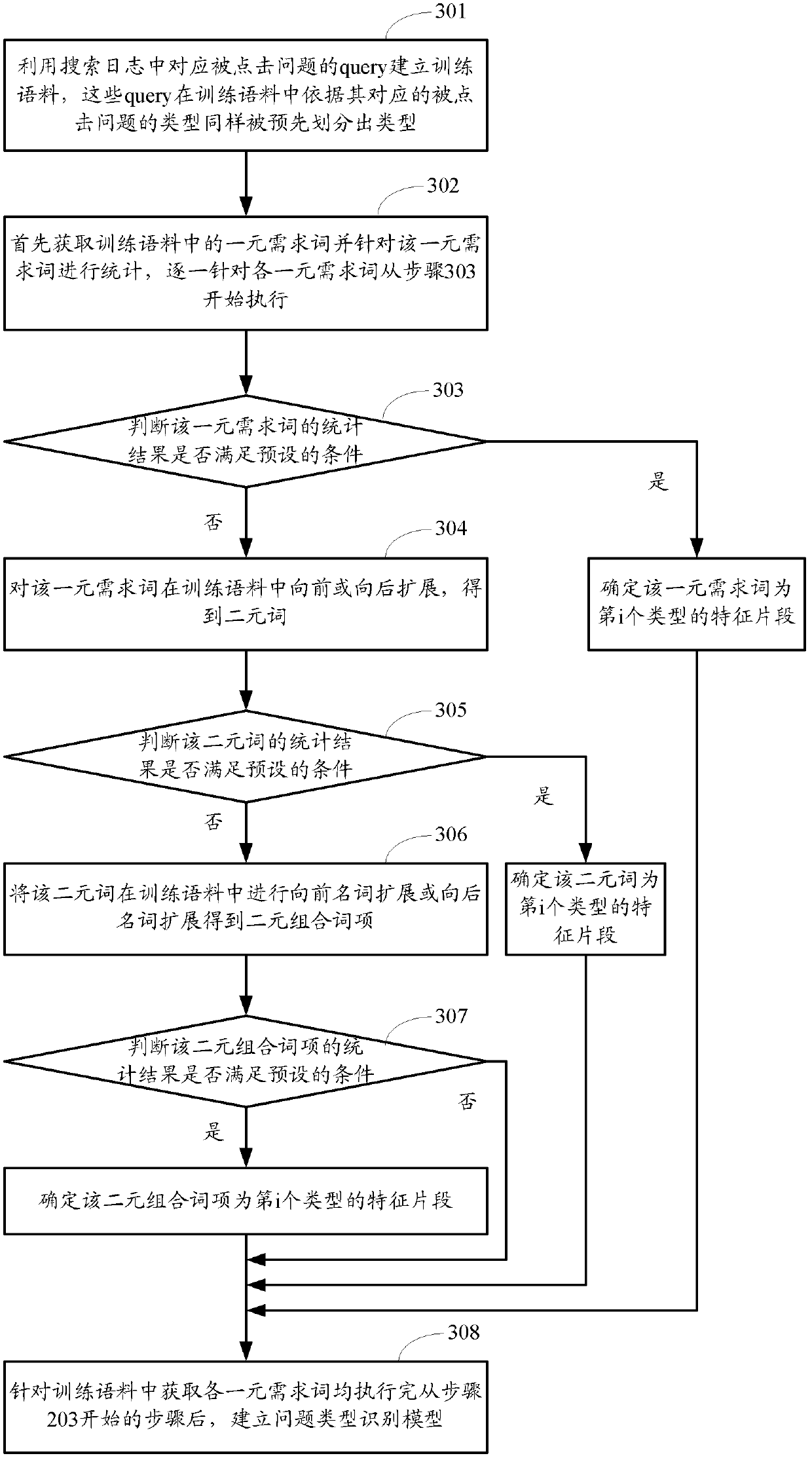Method and device for recognizing problem types and method and device for establishing recognition models
A technology of problem type and recognition model, which is applied in the field of computer network, can solve problems such as poor recognition accuracy, fuzziness, and inability to effectively distinguish, and achieve the effect of improving recognition accuracy and search accuracy
- Summary
- Abstract
- Description
- Claims
- Application Information
AI Technical Summary
Problems solved by technology
Method used
Image
Examples
Embodiment 1
[0057] figure 1 Main method flow chart provided for the present invention, as figure 1 As shown, it mainly includes the following steps:
[0058] Step 101: Obtain a text segment containing interrogative words or demand words from a training corpus, wherein the training corpus includes a pre-classified question set.
[0059] Among them, if the question set in the training corpus is composed of question sentences containing interrogative words, the text fragments obtained in this step are text fragments containing interrogative words, and the model established in this case can be used to identify question types containing interrogative words , which will be specifically described in Embodiment 2. If the question set in the training corpus is composed of queries containing demand words, then the text fragments obtained in this step are text fragments containing demand words, and the model established in this case can be used for implicit question types containing interrogative ...
Embodiment 2
[0067] The problem type recognition model established in this embodiment is mainly aimed at the problem type recognition containing interrogative words, such as figure 2 As shown, the corresponding method for establishing a problem type identification model at this time includes the following steps:
[0068] Step 201: Create a training corpus using question sentences containing interrogative words, and these question sentences are pre-classified into types in the training corpus.
[0069] After a large number of question sentences that contain interrogative words can be marked as the type of question, as the training corpus, the types involved here can be large categories, such as: people, places, numbers, time, entities, descriptions (description includes methods, reasons, Definition, meaning, abbreviation, difference, expression, etc.), yes-wrong questions, choice questions, positive and negative questions, rhetorical questions, etc.; it can also be subcategories, for examp...
Embodiment 3
[0089] The question type identification model established in this embodiment mainly performs type identification for implicit questions that do not contain interrogative words, such as image 3 As shown, the corresponding method for establishing a problem type identification model at this time includes the following steps:
[0090] Step 301: Using the queries corresponding to the clicked questions in the search log to establish a training corpus, these queries are also pre-classified according to the types of the clicked questions corresponding to them in the training corpus.
[0091] During the user's search process, even if the query input sometimes does not contain interrogative words, it actually implies that the expression has the same intention as the question sentence containing interrogative words. For example, the user inputting "Yao Ming's height" actually expresses the same intention as "How much is Yao Ming's height". Based on this principle, the present invention...
PUM
 Login to View More
Login to View More Abstract
Description
Claims
Application Information
 Login to View More
Login to View More - R&D
- Intellectual Property
- Life Sciences
- Materials
- Tech Scout
- Unparalleled Data Quality
- Higher Quality Content
- 60% Fewer Hallucinations
Browse by: Latest US Patents, China's latest patents, Technical Efficacy Thesaurus, Application Domain, Technology Topic, Popular Technical Reports.
© 2025 PatSnap. All rights reserved.Legal|Privacy policy|Modern Slavery Act Transparency Statement|Sitemap|About US| Contact US: help@patsnap.com



